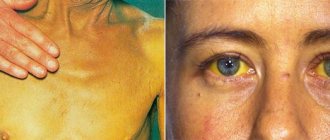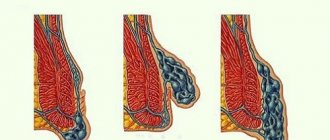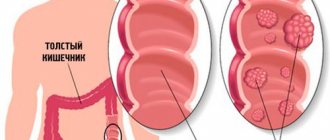Appendicitis is a vermiform appendage of the cecum, which can be found in different places in each person. Appendicitis develops as a result of the inflammatory process in the appendix. Treatment is based only on surgical removal of appendicitis.
Like all other pathologies, this disease can have a classic picture, but it can also have individual characteristics and complications. It all depends on the location of the process, age category, and time of contact with the surgeon. The rehabilitation process after surgery lasts a week.
Acute and chronic appendicitis: what is the difference?
Acute appendicitis
Acute appendicitis is characterized by inflammation of the appendix and is one of the dangerous diseases of the abdominal cavity.
The following microorganisms cause appendicitis:
- Polymicrobial infections;
- They penetrate to the appendix from the intestine, through lymphatic and blood vessels.
Acute appendicitis is a rather insidious disease that develops instantly and within a day can lead to rupture of the appendix and the development of peritonitis.
Symptoms:
- Constant and increasing pain in the iliac region;
- Symptoms depend on the patient’s age category, gender, location of the appendix;
- Significant tension in the abdominal muscles.
In the acute period, the appendage is removed on an emergency basis. If the diagnosis is questionable, the patient is scheduled for laparoscopy. If the patient has a history of several attacks of acute appendicitis, then it is necessary to remove the appendix to avoid serious complications.
You also need to follow a special diet before surgery:
- Limit intake of bread, meat, cabbage;
- The intake of plant and dairy foods is indicated.
If constipation occurs, the patient is prescribed cleansing enemas, taking laxatives and using a heating pad.
Chronic appendicitis
There are two types of chronic appendicitis:
- Recurrent appendicitis. Develops after previous acute appendicitis;
- Primary - chronic appendicitis. It is detected for the first time, and before that there was no acute attack of appendicitis.
Symptoms:
- History of one or more acute attacks of appendicitis;
- Minor pain in the area of the cecum;
- Diarrhea or constipation may develop;
- Sometimes pain can begin after physical strain.
Acute catarrhal inflammation
What symptoms of appendicitis occur in men largely depend on the form of the disease. With acute catarrhal inflammation of the cecum at the initial stage, a man may feel only minor painful sensations.
The operation takes place with minimal consequences for the patient. However, there may be certain problems in making a diagnosis, since there is no clearly defined clinical picture. This type of appendicitis can be determined by performing special tests and blood tests to identify the inflammatory process in the body.
Symptoms of appendicitis
Appendicitis has the following symptoms:
Pain that begins first in the epigastric region;- After some time, the pain moves to the iliac region and spreads throughout the abdomen;
- The pain is constant;
- The patient tries not to make unnecessary movements that lead to pain;
- Decreased appetite;
- Nausea, vomiting;
- Violation of the act of defecation;
- Temperature increase;
- Chills;
- Frequent urge to urinate.
Common appendicitis
The ordinary type of appendicitis is also called superficial, since its symptoms are not pronounced enough. The patient may feel slight pain that does not go away after taking painkillers. In addition, there is nausea and vomiting, which does not bring relief.
There is also a slight increase in temperature and a slightly increased pulse. When palpating the abdomen, a man may notice increased pain, which goes away after the manipulations stop. The results of blood tests show a sharp increase in leukocytes, which indicates the occurrence of an inflammatory process.
Features of the manifestation of appendicitis in different people
Along with the classic symptoms that are characteristic of inflamed appendicitis, there are distinctive features of the process. They must be taken into account when making a diagnosis.
The following manifestations are typical for children and adolescents:
- In childhood, due to the physiological characteristics of the structure of the appendix, inflammation develops very quickly;
- Therefore, when children develop the first symptoms, they should urgently consult a doctor so that serious complications do not develop;
- In a child, several hours may pass from inflammation to the onset of peritonitis;
- It is much more difficult to give a child an accurate diagnosis. All symptoms resemble poisoning;
- The pain may spread throughout the abdomen;
- It is very important during this period to quickly and efficiently diagnose the disease.
In elderly people
In old age, the symptoms of appendicitis are blurred and smoothed out. This greatly complicates the diagnosis. Therefore, at this age, due to a late visit to the surgeon, acute appendicitis develops in a destructive form.
How to check for appendicitis in men?
To do this, the doctor prescribes a series of examinations:
- Clinical analysis of blood and urine;
- Carrying out ultrasound or computed tomography;
- Conducting laparoscopy;
- Signs of appendicitis in men depend on the location of the appendix;
- Constant nausea and vomiting for more than 3 hours;
- Increase in temperature;
- Pain.
How to quickly identify appendicitis in men and women
In order to protect yourself and your loved ones, you need to know a few initial symptoms of appendicitis so that you can take action at home.
Of course, the first sign that helps identify appendicitis in adults and attracts attention is pain in the right side. It can be acute, constant, or appearing from time to time. When walking, laughing, running, the pain intensifies.
To check for appendicitis at home, a sure sign is that your abdomen feels hard when you press on the area where the appendix is located.
How to determine that appendicitis hurts yourself, here are some tips.
- To independently determine inflammation of the appendix, you need to place the patient on a flat surface.
- Let go quickly.
Do not press too hard with your fingers on the right side.
If after the manipulation there is pronounced pain, then you should not hesitate to visit a specialist.
These signs are basic, but also deceptive, because pain in the abdominal area can indicate completely different diseases. Therefore, you should pay attention to small details such as:
- Temperature increase. If a high temperature persists for a long time, all other causes are excluded, then the symptom indicates appendicitis. In children, the temperature can rise to 40°.
- Nausea and vomiting. These signs appear in almost all patients. When sick, vomiting is a reflex. As a rule, in very young children, during exacerbation of appendicitis, nausea occurs much more often than in adults.
- Diarrhea or constipation is quite rare, but can be symptoms of inflammation of the appendix. As a rule, these signs are often the consequences of ordinary food poisoning.
To understand that appendicitis has burst, you don’t need many symptoms - sharp pain, possible loss of consciousness, severe bouts of vomiting. It is dangerous because it can cause peritonitis and poisoning of the whole body, if the operation is not performed within half an hour, it can be fatal.
In fact, this is a rather rare disease, occurring mainly in adults. The symptoms are almost the same as for acute appendicitis, but may not be as pronounced, without an increase in temperature. Pain, as a rule, occurs constantly, but not with such force.
Characteristic signs of human behavior with appendicitis:
What should not be done if appendicitis is suspected:
- You should not resort to taking painkillers, as this will only make the situation worse.
- Do not apply a heating pad to your stomach, it may increase the inflammatory process.
- Do not take laxatives if you are constipated; they put pressure on the appendix and can lead to rupture.
- You cannot put off calling a doctor, as sad consequences will not keep you waiting.
Rupture of the appendix and release of pus into the abdominal area will certainly lead to peritonitis, which can lead to a worse outcome if the patient is not operated on within a few hours.
How doctors define appendicitis:
- The first thing that is necessary is to accurately indicate to the doctor the symptoms that were observed.
- Most likely, you will have to do an ultrasound of the abdominal cavity and donate blood for an accurate diagnosis, so the doctor will be able to make an accurate diagnosis.
But the above symptoms do not appear in such groups of people as:
- diabetics;
- pregnant women;
- elderly people;
- cancer patients;
- HIV-infected;
- little kids.
When a woman has appendicitis, her pulse and breathing quicken, her body temperature rises, and nausea and vomiting appear, which can be confused with toxicosis.
The pain, depending on the stage of pregnancy, can be based in different parts of the abdominal region. Its location depends on the degree of pressure of the uterus on the appendix: the longer the period, the stronger the uterus puts pressure on the appendix, and the higher it rises, as a result of which the location of the pain changes.
Of course, the longer the pregnancy, the greater the chance that appendicitis can adversely affect the fetus. The most dangerous and common complication after appendicitis is termination of pregnancy. Other consequences are placental abruption, acute intestinal failure, peritonitis.
If a woman exhibits these symptoms during pregnancy, it is better not to hesitate and consult a doctor, as it can harm not only the woman, but also the unborn baby.
In older people, appendicitis is more difficult to recognize than in young people. Due to the increased threshold of pain sensitivity, patients often do not pay attention to the appearance of unpleasant sensations in the iliac region.
There is one peculiarity - the appearance of a small tumor in the place where the appendix is located, after several days of mild pain in this area.
Body temperature often remains normal or may increase slightly, nausea and vomiting occur much more often than in middle-aged people. When physical processes in the body are slow, stool retention does not play an important role in determining inflammation of the appendix.
It is most difficult to determine appendicitis in young children. If a child complains of pain, do not delay calling an ambulance.
In children under 2 years of age, this disease is extremely rare due to the immaturity of the digestive system. According to statistics, patients with appendicitis are more common in adolescence. If the child is over 7 years old, then the symptoms of inflammation of the appendix will be similar to the symptoms of adults.
Difficulty in determining the diagnosis arises due to the fact that the child begins to cry, be capricious, and cannot clearly express what hurts or how it hurts. But there are several distinctive signs of a child’s behavior with inflammation of the appendage of the cecum. He squats down, holds his stomach, or lies on his right side in a ball, and does not allow anyone to touch his stomach.
On the first night, after the pain appears, the child will sleep restlessly, constantly waking up. Children often develop a high temperature, reaching 40°. The pain intensifies when bending to the right and when getting dressed.
Nausea and vomiting are not uncommon symptoms of appendicitis in children. The child's condition is deteriorating. Lethargy, weakness appear, and appetite disappears. When accidentally touched on the tummy, the child begins to cry and scream.
It should be remembered that the consequences of surgery to remove the appendix in children can be much worse than in adults, so you should not hesitate to call a doctor and have surgery.
To prevent inflammation of the appendix in a child, you need to know several causes of appendix blockage:
- Low immunity. Frequent colds, acute respiratory viral infections, and flu lead to a decrease in immunity due to the use of various antibiotics. As a result, the child’s body is unable to cope with harmful bacteria and various infections, and they penetrate the appendix and provoke inflammation.
- Foreign objects and worms. In addition, the child often swallows the skins of seeds, seeds along with berries, and small bones from fish, which leads to blockage of the appendix (appendicitis).
- Excess protein foods in the diet, overeating, obesity (these reasons may also apply to adults).
Do not delay calling an ambulance under any circumstances!
So, if you find a combination of even several of the above symptoms, then there is a high risk that it is appendicitis. But after an independent examination, it is necessary to examine a surgeon, and you should not hesitate, because it is he who will make an accurate diagnosis.
Thanks to prompt diagnosis of acute appendicitis, it is possible to detect the disease in time and begin its treatment. This pathology is dangerous due to the appearance of serious complications, which is why it is so important to carry out surgical intervention as early as possible. To detect the disease in a timely manner, you need to know how to identify appendicitis at home.
To diagnose pathology at an early stage of development and distinguish it from other problems in the digestive system, you need to pay attention to the symptoms of appendicitis:
- Pain in the abdomen. With the development of appendicitis, pain is first felt in the navel area, after which it gradually moves to the right lower abdomen. Discomfort appears suddenly and is vague. Usually there is a dull aching pain that does not allow you to take a deep breath. In addition, they increase significantly when coughing or laughing.
- Forced body position. When appendicitis develops, a person cannot straighten up or move normally - this is due to abdominal pain. Another sign of inflammation is the forced posture of an adult or child - the patient lies on his side and raises his legs.
- Nausea and vomiting. With the development of appendicitis, abdominal pain is almost always accompanied by nausea. Debilitating vomiting that does not bring relief may also occur. Sometimes it happens once, but in most cases this condition lasts quite a long time. It is worth considering that in a child or teenager, vomiting is frequent, while in adults this symptom can occur literally 1-2 times. In old age there are no such symptoms.
- Increased body temperature. Usually this figure is 37.5-38 degrees, but in a child it can rise to 40 degrees. If the temperature increases significantly in an adult, this indicates the progression of inflammation.
- Abnormal stool. In most cases there is no this symptom. But if the appendix in an adult or child is located abnormally, constipation may occur. In rare cases, diarrhea may also develop. It is worth considering that in case of poisoning, loose stools bring temporary relief to a person, while in case of appendicitis the condition remains the same - abdominal pain does not disappear after defecation.
- Dry mouth. If abdominal pain is accompanied by this symptom, we can talk about the development of appendicitis.
Sometimes inflammation of the appendix causes frequent and painful urination. Symptoms such as pain in the genitals and lower back may also appear. The child may develop a runny nose and cough, which makes it difficult to diagnose appendicitis in a timely manner.
Diagnosis of the disease
The diagnosis of appendicitis is made based on the following signs:
- The occurrence of pain when palpating and tapping the iliac region;
- If you sharply remove your hands from the area of the appendix, the pain intensifies;
- When turning onto the right side and straightening the right leg, the pain increases;
- Diarrhea develops.
When making a diagnosis, these symptoms are of great importance, but sometimes their picture can be unclear if the process is located in another unusual location. Laparotomy for diagnostic purposes is performed immediately before the surgical intervention itself. As a result of the difficulty in making a diagnosis, serious complications can arise that can lead to the death of the patient.
Acute phlegmonous appendicitis
The acute phlegmonous type of inflammatory process is considered quite dangerous, in this case the caecum is filled with pus and ulcers form on the surface of the intestine. A strong inflammatory process affects nearby tissues into which purulent contents penetrate.
During palpation, very sharp pain occurs. In addition, symptoms of the appendix in men can include the following:
- temperature increase;
- cardiopalmus;
- coating on the tongue;
- abdominal muscle tension;
- severe abdominal pain.
This type of appendicitis is dangerous because the contents of the appendix can spill into the abdominal cavity at any moment, which significantly complicates the process of surgery and subsequent recovery.
Treatment process
It is mandatory to remove the appendage through surgery.
First aid for symptoms of appendicitis:
- Lay the patient down and ensure rest;
- The patient must be transported to the department on a gurney in a horizontal position;
- The patient should not be given painkillers;
- Drink and eat;
- Also give laxatives and perform cleansing enemas.
During the operation, the appendix is removed quickly to avoid its rupture and the development of peritonitis. To remove the consequences of wound infection, the patient is given antibiotics. The operation is performed under local or general anesthesia. We present to your attention an article about an umbilical hernia, where the question of how to cure it without surgery was considered?
The modern technique involves removing the appendix using laparoscopic surgery. She does not cut the peritoneal cavity. The endoscope penetrates through an opening in the tissue. This reduces the trauma during surgery and the rehabilitation process. Also, the risk of complications with such an intervention is reduced to zero.
Why does the appendix become inflamed?
It is impossible to accurately answer the question of why the appendix becomes inflamed, since there are several different versions. This organ regulates and stimulates the immune system, and if the functioning of the immune system is disrupted, it gives a kind of signal. In addition, this condition can be caused by constant constipation, which provokes the accumulation of feces in the lumen of this appendix.
Various undigested food fragments accumulate in the appendix, and inflammation can also occur in case of infection.
Rehabilitation
The rehabilitation period depends on:
- Individual characteristics of the patient;
- Age category;
- Duration of hospitalization;
- Surgical techniques.
The postoperative period extends to 30 days. In obese patients and children under 10 years of age, the rehabilitation period is longer. At a young age and with a good figure, the healing process is faster.
Surgeon's recommendations in the postoperative period:
- Walk short distances;
- When a scar appears on the wound, you can use light physical activity and even swim;
- For athletes and fat people, you need to wear a special bandage;
- Have sexual intercourse no earlier than two weeks after surgery;
- Follow your diet.
Period after surgery
The postoperative period depends on the following factors:
- Type of surgical intervention;
- How quickly does the wound surface heal?
- For the first day, detoxification therapy is carried out according to indications;
- The patient is constantly monitored to avoid the development of bleeding and other complications;
- Painkillers are administered;
- Control body temperature; inspect the seam;
- Collect anamnesis from the patient;
- Monitor urine output and defecation to prevent internal hemorrhage after surgery. Additional causes of blood from the anus during bowel movements can be found here.
How to eat properly after appendectomy
The patient’s nutrition during the postoperative period depends on how the stomach and intestines begin to perform their functions. The patient spends the first two days in hunger, then he is prescribed food to restore strength. It is mostly liquid and light, without bread.
Doctors recommend the following diet:
- Tea with weak brewing and sugar;
- Lean meat broths;
- Porridge;
- Kissel;
- Liquid potatoes;
- Rice broth;
- Rosehip with tea;
- You need to eat food at room temperature.
7 days after surgery you can add to your diet:
- Dairy products;
- Dried fruits;
- Honey.
Exclude the following ingredients from your menu:
- Fried, smoked, salty foods;
- Fat meat;
- Different types of sausages;
- Alcohol;
- Bread and bakery products.
If the patient has no complications, then after 21 days you can eat all food in small quantities without restriction.
Dangerous symptoms of the disease
Acute and chronic appendicitis symptoms in men can be completely different, it all depends on the characteristics of the disease. Chronic appendicitis periodically worries a person throughout his life. The acute type of the disease has quite pronounced, rapidly growing symptoms. There are quite dangerous signs of appendicitis, among which the following should be highlighted:
- a sudden strong increase in temperature for no apparent reason;
- temperature drop to critical values;
- vomiting, which aggravates the condition;
- severe pain, constantly increasing;
- confusion, delirium.
If all these signs appear, you should definitely consult a doctor, since such a condition can lead to the death of the patient. Even if a person feels that the pain has passed, this does not mean at all that there is no more inflammation. This may indicate that the appendix has ruptured.
It is forbidden to carry out treatment at home, as this can only aggravate the condition. When you detect the first symptoms of appendicitis (it does not matter in a man, a woman or a child), you should urgently call an ambulance.
Similar diseases
The causes and symptoms of appendicitis may be similar to other diseases. Undoubtedly, the doctor will distinguish appendicitis from other pathologies.
Diseases with similar symptoms:
- Renal colic and urolithiasis. Additionally, urine is examined;
- Perforation of stomach ulcer. It is necessary to perform laparoscopy to clarify the diagnosis;
- Pneumonia on the right side. After a tomography, the diagnosis will be established with accuracy.
Gangrenous appendicitis
Gangrenous acute appendicitis is the most severe and dangerous type of disease, since a man develops a number of life-threatening abnormalities that require immediate surgery. Among the main signs of the disease are the following:
- severe weakness;
- pain in the peritoneum;
- pale skin;
- tachycardia;
- intoxication leading to disturbances in the functioning of the nervous system;
- severe bloating.
With this type of appendicitis, purulent contents from the appendix pour into the peritoneum, which leads to peritonitis. If the operation is not performed in a timely manner, the person may die from blood poisoning.
Feature of treatment
Treatment is carried out only through surgery. This is a whole complex of activities, which implies certain preparation. Before the operation you need:
- remove hair from the patient's skin;
- carry out degreasing and disinfection of the skin surface;
- pick up anesthesia.
The operation is carried out in several stages, in particular such as:
- the patient is put under anesthesia;
- a dissection of the abdominal wall is performed;
- the appendix and intestines are examined;
- the inflamed cecum is removed, and its edges are sutured;
- the peritoneum is tightened and sutured;
- the skin is tightened and sutures are placed.
It is impossible to carry out treatment without surgery. If complications arise due to the penetration of purulent contents into the peritoneal cavity, then it is thoroughly cleaned and drainage is installed. This device helps remove pus from the body.









